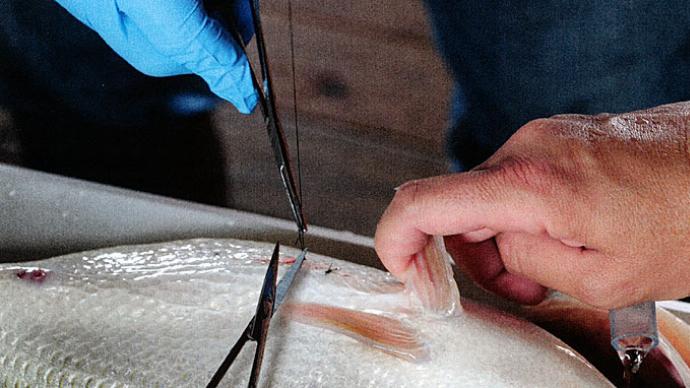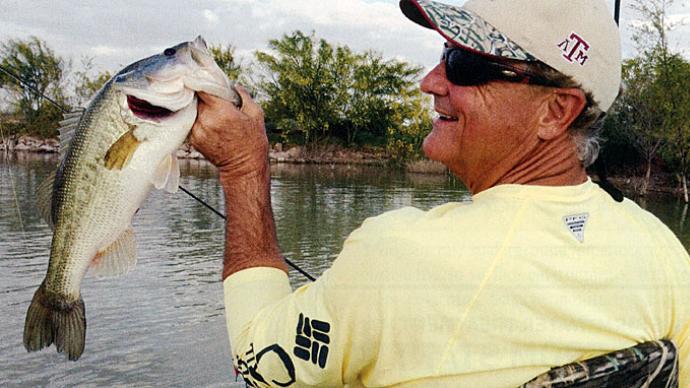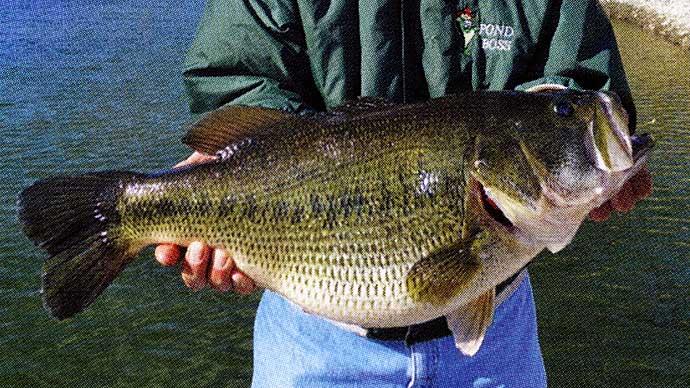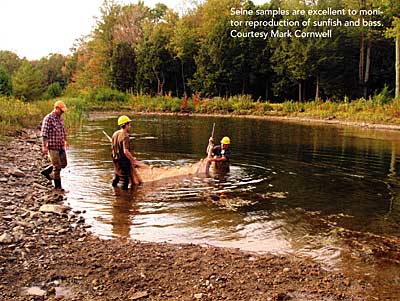
Pond owners are keenly interested in how their fish are doing. Answering that question requires both science (sampling info) and art (knowledge of what all the info means when taken together). In my opinion, the more information available, collected over time, the better chance that any conclusions will be on target. There are multiple methods of gathering information and pond owners can help their cause by making good notes and pictures of what they experience. That data should be provided to professionals well in advance of their arrival to conduct sampling.
Sampling methods include creel (catch records), seine sampling (simple method of short shore seining), visual information, fyke net samples, electrofishing surveys, and others. Each method has its limitations, pluses and minuses, but are all collectively done to collect size structure and relative abundance data on the species present. Some of these are often done by pond owners, and that data is important. Other methods, like electrofishing, are almost always done by professionals. All of the active sampling methods used in ponds require determination of catch per unit effort (CPUE). If all things are equal, twice the effort should lead to capture of twice as many fish. Of course, as population density decreases, additional effort to capture individuals will lead to a lower amount of CPUE. Size structure indices and CPUE are commonly used by fisheries managers to draw inferences about fish population dynamics. Proportional Size Distribution (PSD) and CPUE are numerical descriptors of length frequency and relative abundance, respectively. However, fisheries managers are cautious and rarely base decisions solely on calculations of one or both of these indices. These indices are best used in conjunction with a suite of diagnostic information, including fish growth, condition (relative weight; Wr), and recruitment, as well as angler creel data. This is where the fisheries biologist uses both science and art together to form and combine methods and data to compile the best analysis.
A study titled, A Comparison of Two Methods for Sampling Bluegill and Redear Sunfish in Small Impoundments by Michael J. Porta, Richard A. Snow and Daniel E. Shoup in North American Journal of Fisheries Management 2020 American Fisheries Society shows this in action. This study sought to determine the preferred methods for sampling bluegill and redear sunfish in five small impoundments (9 to 250 acres) in Oklahoma. These lakes also had Largemouth bass and crappie, so a combined best sampling method (for all four species) was examined. The authors noted spring boat electrofishing and fall fyke netting are two methods suitable for sampling bluegill and redear. Electrofishing is often used to target Largemouth bass and fyke nets to target crappies. It would be efficient to collect data coincidentally with Largemouth bass electrofishing or crappie fyke-net samples. Therefore, it is important to know how samples from these two methods compare in order to pick the best methods to collect precise bluegill/redear population data. The sampling methods evaluated in this study were used primarily to target Largemouth bass (spring electrofishing) and crappies (fall fyke netting). Both methods effectively sampled bluegill/redear alongside both target species. The results suggest that spring electrofishing is more efficient at sampling bluegill/redear than fyke nets in small impoundments.
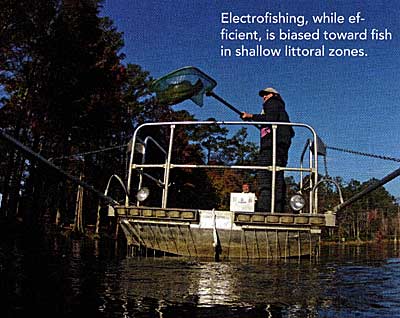
Most interesting was the large variance in bluegill/redear population structure between lakes over time as depicted below.
With the above in mind, let's take a moment to examine sampling methods to help pond owners understand electrofishing. To start, it is a sample and only a small percentage of fish are sampled, and only those in the electrofishing field. Water conductivity is probably the single most important factor influencing electrofishing efficiency. Water depth is also important since the field only effectively goes down about six feet. As with all sampling gear, electrofishing is known to be selective, with fish length probably being the biggest variable. Capture efficiency is usually higher for large fish due to the greater voltage gradient across their bodies. Size selectivity can be reduced by using higher voltages, but increased injury and mortality can result. Species differ in internal conductivity and behavioral response to electric fields, and these also can affect capture efficiency. Different sizes and different species of fish react differently to the electrofishing. Finally, characteristics of the habitat being sampled are extremely important, and capture efficiency can differ by species/lake due to differing lake habitat and preferences. Pond bottom substrate size and composition affect strength and shape of the electric field, with soft-bottom substrates generally reducing capture efficiency more than coarse ones. Different results can be obtained in day versus nighttime electrofishing. One drawback of electrofishing is the potential for fish injury. However, compared to other sampling techniques, electrofishing is relatively benign, and the injury or mortality imposed when sampling a relatively small fraction of a population is unlikely to result in significant risk to the resource. In addition to direct injury or mortality, electrofishing may cause behavioral changes that tend to reduce catchability for a short period of time (day or two). If used close in time this could cause false findings of certain other sampling techniques (fyke and seine netting) for estimating abundance. In the above study this issue was avoided by timing.
Sampling methods are complex and must be put in perspective with other data using an artful approach by experienced fisheries scientists. This article should help us pond owners be in a better position to provide data and ask questions about "How our fish are doing".
Reprinted with permission from Pond Boss Magazine

